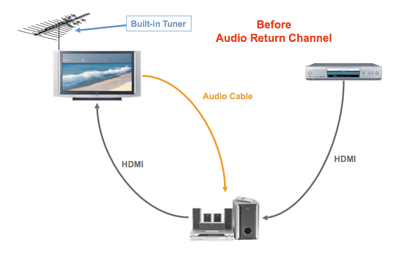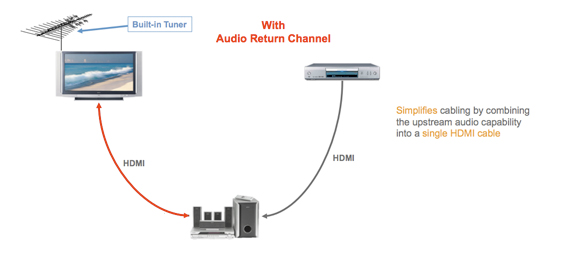The Audio Return Channel in HDMI 2.0 enables a TV, via a single HDMI cable, to send audio data “upstream” to an A/V receiver or surround audio controller, increasing user flexibility and eliminating the need for any separate S/PDIF audio connection.
TVs have always been able to receive multi-channel audio through an HDMI connection, and this is still a typical use-case, with the TV positioned “downstream” from content sources and any connected audio equipment. However, if a user had a TV with a built-in tuner or DVD player, and wanted to send content “upstream” from the TV back to the audio system, a separate connection had to be installed, typically an S/PDIF cable.
-
An Audio Return Channel-enabled TV can either send or receive audio via HDMI, upstream or downstream, depending on system set-up and user preferences.
-
LipSync functionality, introduced in HDMI 2.0, ensures that the audio stays matched to the video, automatically compensating for any processor delays whether the audio is traveling upstream or downstream.


How to Ensure Audio Return Channel functionality in your Home Theater System
-
Look for devices that feature Audio Return Channel functionality.
-
All HDMI cables will support Audio Return Channel functionality when connected to Audio Return Channel-enabled devices. You can use your existing HDMI cables or choose a different cable type.
-
Connect your devices through Audio Return Channel-enabled HDMI ports. HDMI LA has strongly recommended that Adopters label all Audio Return Channel-compliant HDMI ports with the letters ‘ARC’ for easy identification, but does not require manufacturers to do so. Please check with your manufacturer to determine which HDMI ports (if any) will support Audio Return Channel functionality.
